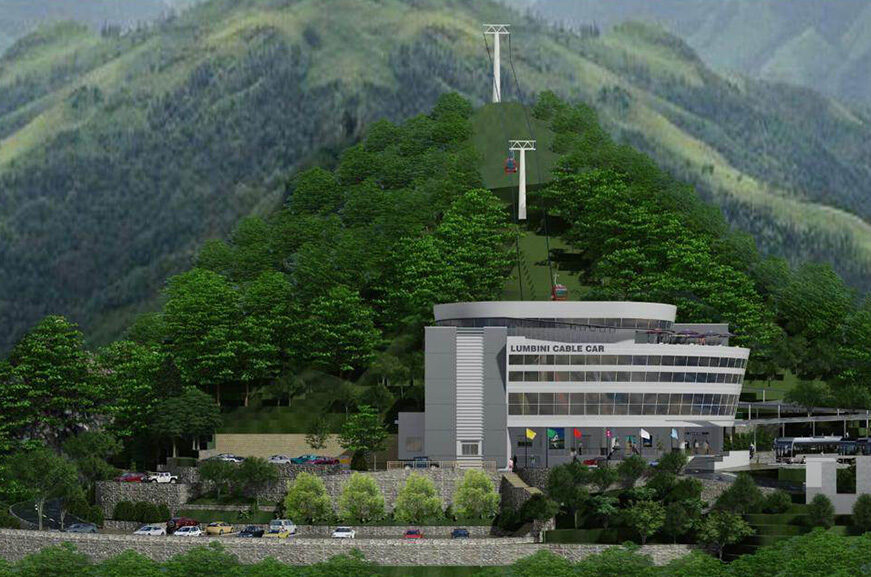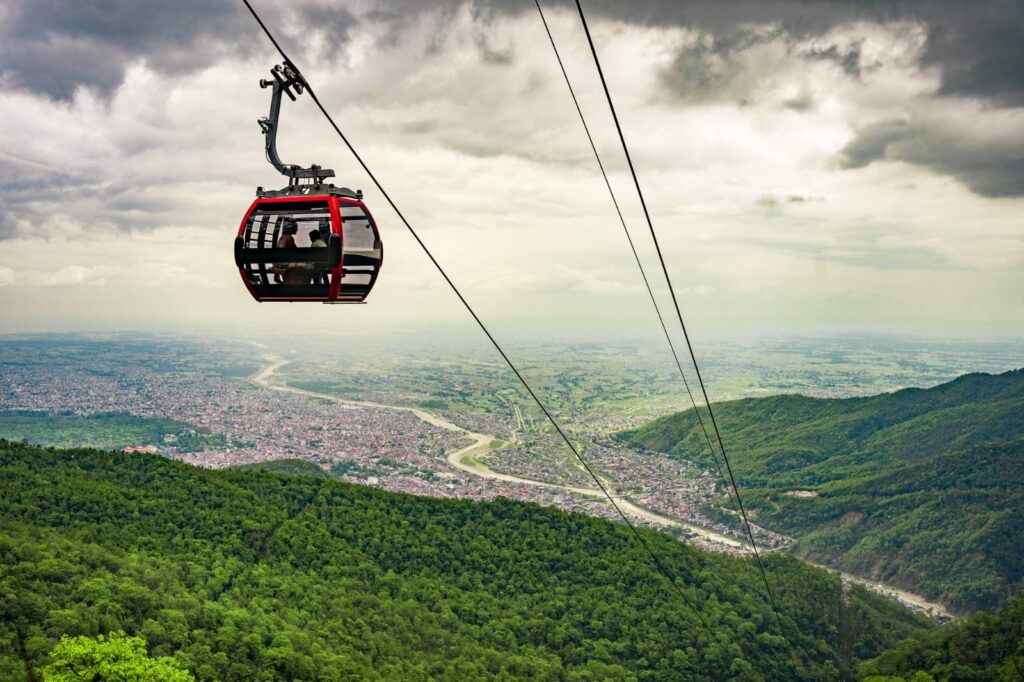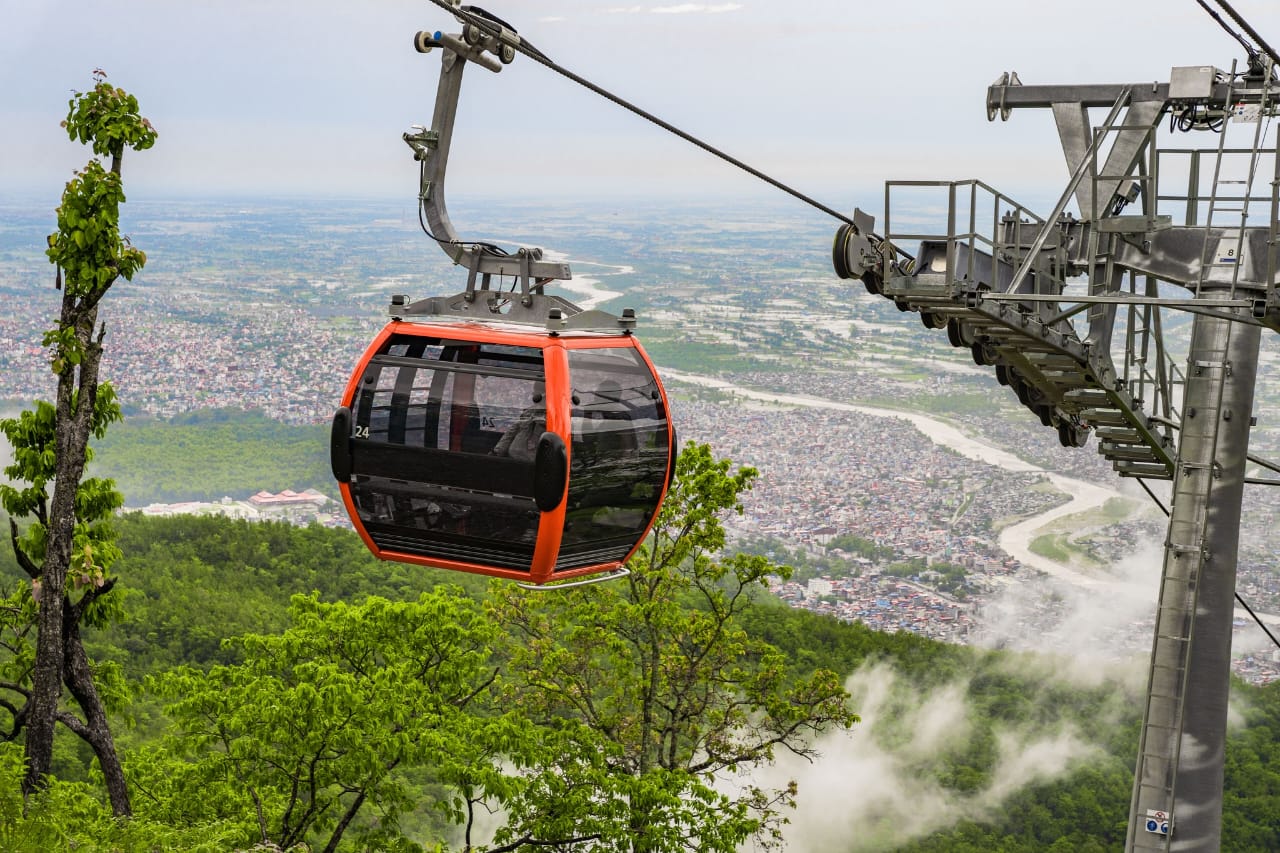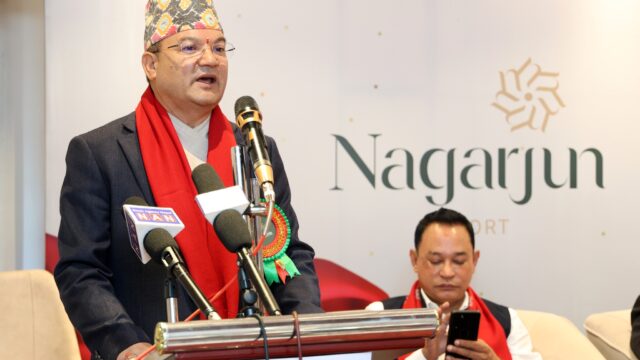The Lumbini Cable Car, a significant tourism infrastructure project connecting Butwal to the spiritual hilltop of Basantapur, has entered its third year of operation with strong performance and growing international attention. Since its official launch, the cable car has transported nearly 350,000 tourists, reflecting its growing popularity as a must-visit attraction in Nepal’s Lumbini Province.
Steady Growth in Tourist Footfall
According to the Lumbini Cable Car Company, the total number of visitors using the service continues to climb, with a notable increase in Indian tourists. In the fiscal year 2023/24 (2080/81), Indian tourists made up 8% of the total, a figure that has impressively risen to 21% in the current fiscal year. Operations Manager DN Kayastha Sainju confirmed that over 50,000 Indian tourists have visited in the past two years alone, a strong indicator of the cable car’s growing appeal across the southern border.
In contrast, the proportion of visitors from third countries, those other than Nepal and India, remains below one percent, indicating that while the cable car has become popular regionally, it has yet to make a substantial impact on broader international tourism.

Historical Roots and Visionary Beginnings
The vision to construct a cable car connecting Butwal to Basantapur dates back to 2053 B.S., when local entrepreneurs Laxman Gautam, Tej Prasad Sunar, and Rishi Bhandari initiated the project by acquiring 100 ropanis of land. Despite the initial enthusiasm, the project did not progress significantly for several years until it received a major boost under the leadership of Chandra Prasad Dhakal’s IME Group approximately six years ago.
With the entry of the IME Group, which brought in capital, project management expertise, and a broader vision, the construction of the cable car gained momentum. Today, the Lumbini Cable Car stands as a successful example of public-private partnership and entrepreneurial perseverance in Nepal’s tourism sector.
Innovative Promotional Strategies
In an effort to make the cable car experience more accessible and appealing to a wider audience, the company has implemented several promotional initiatives. These include partnerships with organizations to offer discounted ticket prices and attractive packages. Among the notable offers are:
- Free rides on birthdays: Visitors celebrating their birthdays can enjoy a complimentary cable car ride.
- Maha Aarti Special: On the first evening of each Nepali month, a special Maha Aarti event is organized at the top station, drawing spiritual tourists and local devotees alike.
- Group Discounts: Groups consisting of more than 50 people receive special rates, encouraging school tours, pilgrimages, and corporate outings.
These marketing strategies have not only increased ticket sales but have also enhanced the visitor experience, making the cable car journey more than just a mode of transportation — it’s an event in itself.
Contribution to Local Economy and Tourism Ecosystem
The Lumbini Cable Car has had a noticeable impact on the local economy, especially in the hospitality and service sectors of Butwal and Basantapur. Restaurants, hotels, and local vendors have benefited from the rising number of tourists. With its scenic views, spiritual ambiance, and convenient connectivity, the cable car has become a focal point in Lumbini Province’s efforts to diversify and expand its tourism offerings beyond traditional pilgrimage routes.
The spiritual significance of Basantapur, coupled with panoramic Himalayan views from the cable car route, has also turned it into a place of retreat for spiritual seekers and families alike. The introduction of events like the Maha Aarti adds a cultural dimension that attracts both religious and leisure travelers.

Future Prospects and Expansion Goals
Looking ahead, the Lumbini Cable Car Company aims to further enhance its offerings by introducing additional spiritual and recreational attractions at both the base and top stations. Plans are also underway to boost international marketing efforts, especially targeting the growing Indian middle class and Nepali diaspora.
Operations Manager Sainju stressed the company’s commitment to continual improvement: “We believe this cable car is more than just infrastructure, it is a bridge between cultural heritage and modern tourism. Our aim is to make it a signature destination not just for Nepalis, but for the world.”
As the cable car enters its third year of service, it stands as a beacon of regional tourism development and cross-border connectivity. With a strategic location, strong leadership, and a focus on both spiritual and leisure tourism, the Lumbini Cable Car is well on its way to becoming one of Nepal’s iconic tourist experiences.






